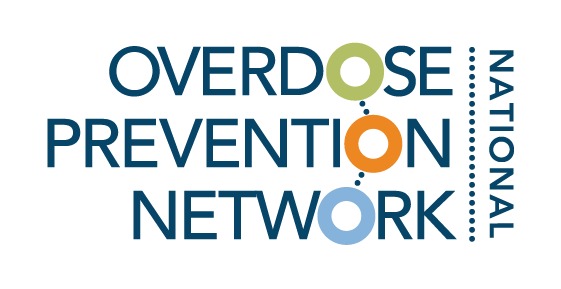
Resource Library
Toolkits, guides, and other resources vetted by experts in overdose prevention.
Filter by category and tags, or search by keyword (ex. COVID-19, harm reduction).
American Medical Association
Throughout history, the AMA has always followed its mission: to promote the art and science of medicine and the betterment of public health. As the physicians’ powerful ally in patient care, the AMA delivers on this mission by representing physicians with a unified voice in courts and legislative bodies across the nation, removing obstacles that interfere with patient care, leading the charge to prevent chronic disease and confront public health crises, and driving the future of medicine to tackle the biggest challenges in health care and training the leaders of tomorrow.
The Network for Public Health Law
The Network for Public Health Law provides visionary leadership in the use of law to protect, promote and improve health and health equity. We provide non-partisan legal technical assistance and resources, collaborating with a broad set of partners across sectors to expand and enhance the use of practical legal and policy solutions.
Remedy Alliance for the People
Access to naloxone isn’t just a funding issue. Barriers to accessing low-cost naloxone are a result of the decades-long war on drugs. This organization is working to eliminate barriers from three different angles: distribution, technical assistance, and research.
Chicago Recovery Alliance
The Chicago Recovery Alliance (CRA) is a racially and ethnically diverse group composed of people living with HIV and drug use, working in addiction treatment, healthcare, education, law and other assorted areas. CRA is unique as an organization in that our work entails building one-on-one relationships with individuals affected by HIV and drug use and provide them with a wide array of options for achieving any positive change as they define it for themselves. CRA is an organization for those interested in directly serving, supporting, educating and advocating with others for reducing drug related harm.
Contingency Management: A Highly Effective Treatment For Substance Use Disorders And The Legal Barriers That Stand In Its Way
This fact sheet makes the case for contingency management as a behavioral treatment option to addressing SUD. It explains some of the legal barriers to implementing contingency management on a wide scale, and why it is important to embrace methods other than medicine in our efforts.
10 Facts About Methamphetamines
This fact sheet answers ten FAQs regarding methamphetamines and their place in the addiction and overdose discussion.
Recovery Month Toolkit 2022
This year, to address the nation’s mental health and overdose crisis, SAMHSA is launching initiatives that increase access to prevention, harm reduction, treatment and recovery services and supports, celebrate the strong and proud recovery community, and applaud the dedication of service providers and community members across the nation who make recovery possible.
Colorado's Opioid Settlement Funds Framework
This website provides detailed information regarding the current status of the Colorado opioid settlement funds, including the participating partners and current funding allocations.
Opioid Settlement Tracker
This website provides detailed information regarding the current status of the various opioid settlement funds by state, as well as other resources for how to look at your local opioid settlement status.
AAFP/AMA Backgrounder: Medication-Assisted Treatment (MAT)
Deaths due to illicit fentanyl and heroin are now leading drivers of the opioid epidemic. This document argues for stronger support from the federal government in providing resources to curb overdose-related deaths, such as MAT.
MAT for Opioid Use Disorder: Overcoming Objections
Despite data showing the success of MAT in treating drug addiction, objections are still common. This document helps clear up some common misconceptions about MAT, and brings evidence-based practice to the discussion around MAT.
Talking to Teens About Fentanyl
This discussion guide is designed to help you talk with the teens around you about fentanyl in a way that empowers them to make safer choices.
What is fentanyl and why is it behind the deadly surge in US drug overdoses?
As fentanyl has become ubiquitous across the U.S., it has transformed the illicit drug market and raised the risk of overdose. This article provides insight into how fentanyl has infiltrated the drug supply in America so quickly, and how we can prevent deaths moving forward.
Drug Fact Sheet: Fentanyl
This fact sheet from the Drug Enforcement Administration provides information about the origin and harmful effects of fentanyl.
Bob’s Story
This is the story of Bob and his experience with overcoming substance use disorder.
Preliminary Monthly Fatal Drug-Related Overdose Counts for April 2021 – March 2022
The CDPH Substance and Addiction Prevention Branch (SAPB) has recently updated its new data resource - Preliminary Monthly Fatal Drug-Related Overdose Counts for April 2021 - March 2022. This preliminary statewide monthly count data is presented by substance and posted on the Overdose Prevention Initiative (OPI) Data webpage. It is intended to provide death data to our partners more quickly. These counts may not represent all overdose-related deaths that occurred during the corresponding period. Subsequent versions of this data resource will also be available on the OPI Data webpage. The CDPH team continues to update the California Overdose Surveillance Dashboard with death data.
ODMap
The California Emergency Medical Services Authority (CEMSA) has implemented ODMap statewide. Since 2020, CEMSA has logged over 145,000 non-fatal overdoses and over 12,000 fatal overdoses into ODMap, which provides a heavy source of data to go off of for future reference. A reminder that this is just one agency logging overdoses and does not reflect the entire state and other agencies who are not part of CEMSA and are continually logging overdoses onto ODMap every day. There is still a push for full statewide ODMap implementation with other agencies, but this is a step in the right direction.
CHRI Point in Time Survey Results
California Harm Reduction Initiative (CHRI), funded by the California Department of Public Health and led by National Harm Reduction Coalition includes a Point In Time (PIT) survey as a part of its evaluation. All 37 syringe services program grantees collect information from participants twice a year, and this highlights a lot of important things about participants experiences with overdose, drug use and access to services.
Tribal Opioid Settlement Webpage
Nationwide settlements have been reached to resolve all opioids litigation brought by states and local political subdivisions against the three largest pharmaceutical distributors. These settlements will provide substantial funds to states and subdivisions for abatement of the opioid epidemic across the country, and will impose transformative changes in the way the settling defendants conduct their business. This web page outlines the various opioid settlements for the tribal communities in the U.S., and offers legal documents outlining the risks and opportunities that these funds present.




















